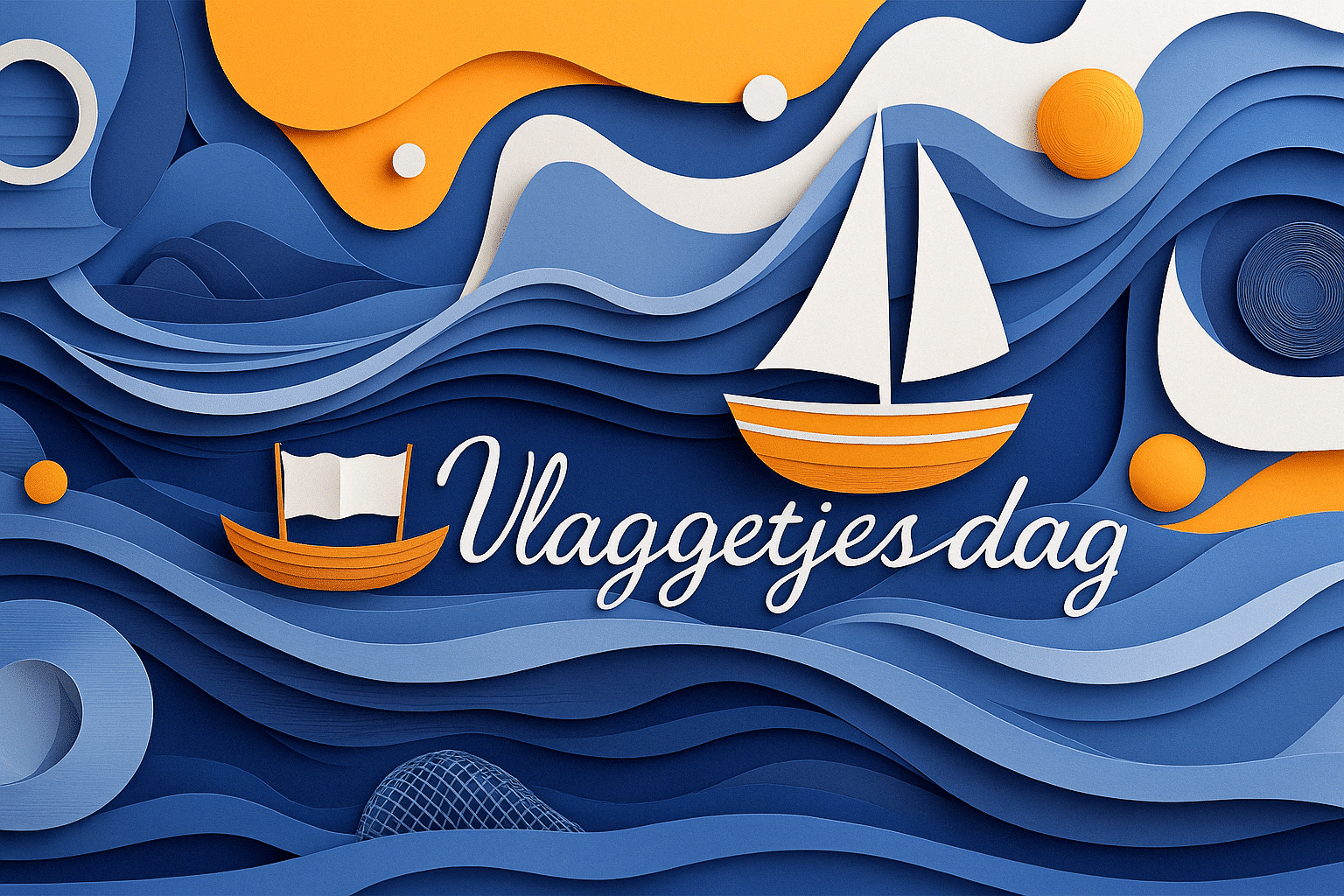What is Vlaggetjesdag?
Vlaggetjesdag is held every year on the third Saturday in June and is observed in the Netherlands. The day celebrates the arrival of the first Dutch new herring of the season, known as “Hollandse Nieuwe”. It is a festive tradition deeply rooted in maritime culture and local pride.
The celebration is especially popular in Scheveningen, where decorated fishing boats, food stands, music, and maritime shows attract large crowds. In other parts of the country, smaller events also honour this beloved fish. It is a day of tradition, taste, and community.
History and Origin
The tradition began in the early twentieth century, when boats would be decorated with small flags before leaving for the herring season. It started as a practical moment of farewell and developed into a festive send-off. Over time, the focus shifted from departure to the return of the first catch.
Today, Vlaggetjesdag is no longer about sailing out but about celebrating the arrival of the new season’s fish. In places like Scheveningen, the event has grown into a large public festival with historical ships, reenactments, and tastings. It remains one of the most visible connections between Dutch life and the sea.
Who participates in Vlaggetjesdag?
- Fishermen: Present the first Hollandse Nieuwe and showcase maritime heritage.
- Seafood vendors: Offer fresh herring and other traditional fish-based dishes.
- Families and locals: Celebrate the event with food, games, and music.
- Tourists: Visit coastal towns to experience the culture and traditions.
- Event organisers: Set up concerts, parades, and demonstrations to bring the harbour to life.
Slogans and Themes
Vlaggetjesdag carries themes of pride, tradition, and connection to the sea. Common slogans include “Proef de Hollandse Nieuwe” and “Scheveningen viert de haring.” These phrases capture the blend of culinary joy and local identity that defines the celebration. It is a moment where old customs and public festivity meet.
Colors, Symbols and Patterns
Colors
- Blue: Symbolises the sea and Dutch maritime history.
- White and red: Refer to the Dutch flag and festive decorations.
- Silver: Stands for the gleaming skin of the Hollandse Nieuwe.
Symbols
- Herring: The key figure of the day, eaten with onions or pickles.
- Fishing boat: Represents coastal life and traditional trade.
- Miniature flags: Refer to the name of the day and decorate boats and stalls.
Patterns
- Wave lines: Refer to the sea and the journey of the herring.
- Netting textures: Symbolise the tools of the fishing trade.
- Scale motifs: Represent the fish and the texture of fresh catch.
Most used hashtags
- #Vlaggetjesdag
- #HollandseNieuwe
- #HaringHappen
- #Scheveningen
- #MaritiemErfgoed
How do you celebrate Vlaggetjesdag?
- Taste fresh herring: Enjoy Hollandse Nieuwe with or without onions.
- Join the festivities: Visit Scheveningen or another coastal town to take part.
- Watch a parade: See historical ships, costumes, and performances on display.
- Explore maritime exhibits: Learn about the history of herring fishing and Dutch seafaring life.
- Share the experience: Post your visit or tasting online with relevant hashtags.
Why is Vlaggetjesdag important?
Vlaggetjesdag is important because it connects everyday life to centuries of maritime tradition. It celebrates a national food that has historical and cultural value, while also bringing people together in a cheerful and shared experience. Through this event, fishing communities maintain their visibility, and the public learns to value the craft and care behind each catch.
It is also a celebration of rhythm and season. The arrival of the first herring marks a moment of renewal and summer festivity. It’s a reminder that food, heritage, and tradition are all reasons to gather, taste, and take pride in what the sea brings to the Dutch table.
Features
Contact Info
Third Saturday of June: Vlaggetjesdag (Netherlands)
Why do you keep falling for the same type?
Read the article Lovemaps: the hidden blueprint of our love.

